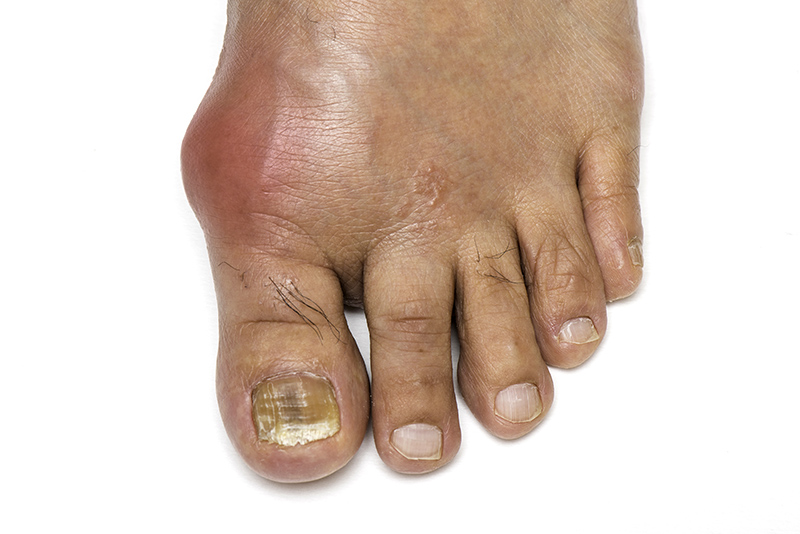
Social media activist Tariq Nasheed revealed he suffers from chronic gout. Gout is a common form of arthritis that causes intense pain, inflammation and swelling in the joints.
In a video, Tariq shared that he recently underwent surgeries on his foot to debride an infected wound caused by uric acid deposits in his toe joint. He said his gout is hereditary since his father also has “very bad” gout in his foot and had to have a toe amputated.
What Causes Gout?

Gout is caused by high levels of uric acid in the bloodstream. Uric acid is a normal waste product from the digestion of foods that contain high levels of purines.
Purines are normally produced in the body and are also found in foods, particularly organ meats such as liver, kidney and sweetbreads, and seafood, including shrimp, anchovies, herring, sardines, mussels, scallops, trout, tuna, mackerel and haddock.

These foods should be avoided if you have gout. You should also reduce your alcohol intake.
What are gout attacks?
Gout attacks, also known as flare-ups, occur in waves of sudden, intense pain, redness of the joints and swelling. The pain usually wakes you up at night when the body temperature is lower. The pain intensity peaks at 24 hours and lasts for five to seven days.
After the attack subsides sufferers usually are symptom-free until the next flare up.
Gout can be acute (newly diagnosed) or chronic (longterm). Chronic gout is when people experience 2 or more gout attacks per year. Some people have only short breaks between multiple gout attacks. While others may only have 2 gout attacks per year.
Who is at risk for gout?
1-2% of Americans suffer from gout. Anyone can get gout, but it is more common among older Black men in their 40s and menopausal women. Risk factors include medications, such as diuretics and cyclosporine.
Doctors believe gout is associated with kidney disease which may be undiagnosed. People who suffer from gout are unable to clear the uric acid from their bloodstream via their urine due to kidney disease. Since uric acid is not removed from the body in urine, it builds up in the blood and forms irritating crystals which are deposited in the joints.
Untreated gout can lead to kidney disease and, in rare cases, kidney failure. Some people can have high uric acid levels and never develop gout.
50% of gout attacks occur in the feet, particularly the joint at the base of the big toe, but gout can also be found in other joints, including the ankles, elbows, knees, fingers and wrists.
What are signs and symptoms of gout?
Signs and symptoms include:
What is treatment for gout?
Fortunately treatments are very effective in relieving gout pain. Ice packs can make you feel good. Also taking medications such as non-steroidal anti-inflammatory drugs (NSAIDs), including Motrin (ibuprofen), Advil (ibuprofen) and Aleve (naproxen). Colchicine is an alternative for those who suffer from stomach ulcers and are unable to take NSAIDs. Glucocorticoids (steroids) are as effective as NSAIDs. Consult your doctor or healthcare provider for treatment that works best for you.
This has been your Medical Minute.
More Info On the Web
Gout (Gouty Arthritis) – WebMD
Gout | Arthritis – CDC
Gout – Diagnosis and treatment – Mayo Clinic
DISCLAIMER
Any medical information published on this blog is for your general information only and is not intended as a substitute for informed medical advice. You should not take any action before consulting with your personal physician or a health care provider. Sandrarose.com and its affiliates cannot be held liable for any damages incurred by following information found on this blog.





